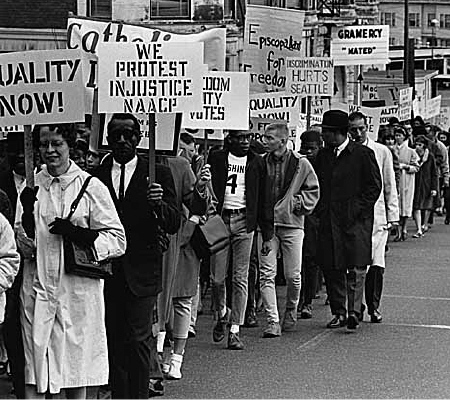(Excerpted from An Interview with Jonathan Metzl)
When did you first suspect that diagnostic patterns withschizophrenia had become heavily racialized?
I found dramatic racial and gender shifts in persons diagnosed with schizophrenia at Ionia during the 1960s—so much so that schizophrenia's racial and gendered transformation became the central narrative of my book. This shift became apparent very early in my research. Before the 60s, Ionia doctors viewed schizophrenia as an illness that afflicted nonviolent, white, petty criminals, including the hospital's considerable population of women from rural Michigan. Charts emphasized the negative impact of "schizophrenogenic styles" on these women's abilities to perform their duties as mothers and wives.
To say the least, these patients were not seen as threatening. This patient wasn't able to take care of her family as she should, read one chart; another, This patient is not well adjusted and can't do her housework; and another, She got confused and talked too loudly and embarrassed her husband.
By the mid- to late-1960s, however, schizophrenia was a diagnosis disproportionately applied to the hospital's growing population of African American men from urban Detroit. Perhaps the most shocking evidence I uncovered was that hospital charts "diagnosed" these men in part because of their symptoms, but also because of their connections to the civil rights movement. Many of the men were sent to Ionia after convictions for crimes that ranged from armed robbery to participation in civil-rights protests, to property destruction during periods of civil unrest, such as the Detroit riots of 1968. Charts stressed how hallucinations and delusions rendered these men as threats not only to other patients, but also to clinicians, ward attendants, and to society itself. You'd see comments like Paranoid against his doctors and the police. Or, Would be a danger to society were he not in an institution.
Did the second edition of the DSM (
| Diagnostic and Statistical Manual of Mental Disorders) |
One of the key pieces of evidence I use to help explain the shifts seen at Ionia is through an extensive analysis of the changing language associated with the official psychiatric definition of schizophrenia. Before the 60s, psychiatry often posited that schizophrenia was a psychological "reaction" to a splitting of the basic functions of personality. Official descriptors emphasized the generally calm nature of such persons, in ways that encouraged associations with middle-class housewives.
But the frame changed in the 60s. In 1968, in the midst of a political climate marked by profound protest and social unrest, psychiatry published the second edition of the Diagnostic and Statistical Manual. That text recast the paranoid subtype of schizophrenia as a disorder of masculinized belligerence. "The patient's attitude is frequently hostile and aggressive," DSM-II claimed, "and his behavior tends to be consistent with his delusions." I have a lot of data in my book that shows how this language—particularly terms such as "hostility" and "aggression"—was used to justify schizophrenia diagnoses in black men at Ionia in the 1960s and 1970s.
Continue Reading
